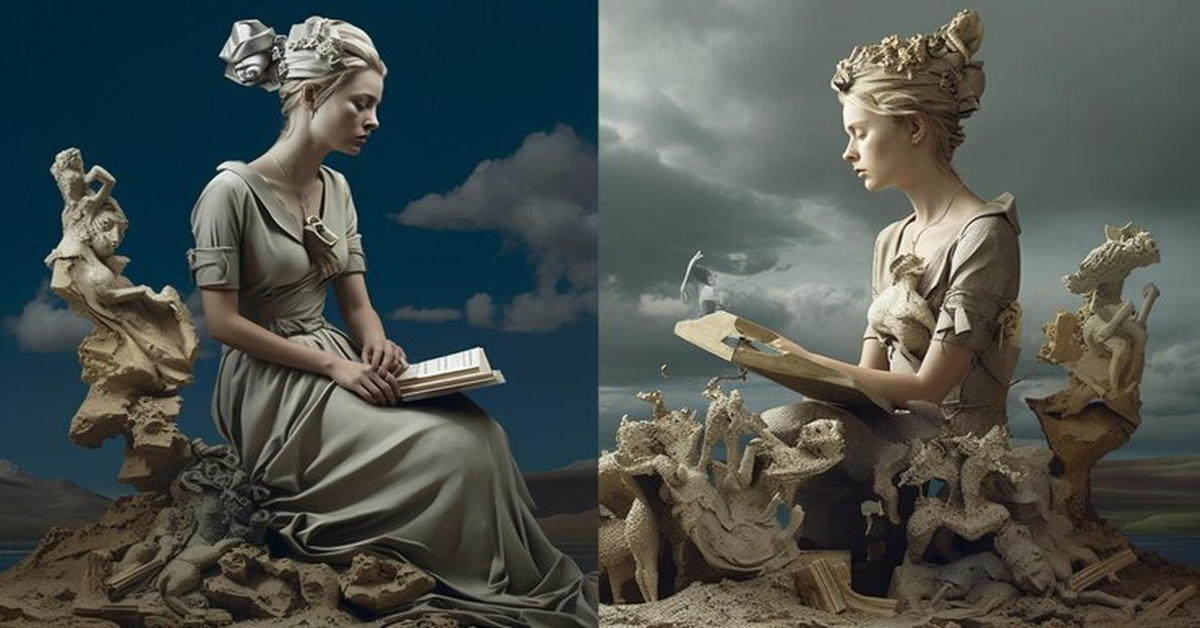Throughout history, literature and mythology have given us countless iconic female figures. Among them, Alice from Alice’s Adventures in Wonderland and Eve from the biblical Book of Genesis stand out as enduring symbols representing curiosity, innocence, temptation, and the quest for knowledge. Though originating from vastly different cultural backgrounds and time periods, Alice and Eve continue to influence literature, psychology, philosophy, and even modern feminist discourse.
This article will explore the origins, symbolic meanings, and cultural evolution of Alice and Eve. We’ll also examine how these two figures, often seen as polar opposites, reveal deeper truths about humanity’s struggle with innocence, experience, and self-awareness.
Origins and Historical Context
Alice: The Victorian Child of Curiosity
Alice emerged from the Victorian era’s fascination with childhood innocence and imagination. Created by Lewis Carroll (Charles Lutwidge Dodgson), Alice’s Adventures in Wonderland was first published in 1865. Alice’s journey down the rabbit hole represents a child’s confrontation with the absurdities and contradictions of adult society.
Eve: The Archetypal Mother of Humanity
Eve first appears in the Book of Genesis in the Hebrew Bible (Torah/Old Testament). As the first woman, created from Adam’s rib, she symbolizes humanity’s beginnings. Her decision to eat from the Tree of Knowledge introduced both sin and awareness to humankind—a complex act of defiance, curiosity, and destiny.
Literary and Symbolic Analysis
Alice’s Symbolism
Curiosity and Exploration
Alice embodies the natural curiosity of youth. Her adventures mirror the human desire to question, explore, and understand the world, even at the risk of disrupting the status quo.
The Absurdity of Society
Carroll uses Wonderland to satirize Victorian society’s rigid logic and class structures. Alice’s encounters highlight the confusing transition from childhood innocence to adult complexity.
Eve’s Symbolism
Knowledge and Disobedience
Eve’s choice to eat the forbidden fruit is often viewed as an act of disobedience. However, it can also be interpreted as humanity’s first quest for knowledge, autonomy, and self-awareness.
The Cost of Freedom
Her actions led to expulsion from Eden, symbolizing the painful journey from innocence to experience—a theme mirrored in countless literary works.
Psychological Perspectives
Psychoanalysts like Carl Jung and Freud have explored Alice’s journey as a metaphor for navigating the unconscious mind. Her dreamlike experiences align with Jung’s concept of individuation—the process of integrating the conscious and unconscious self.
Eve: The Original Archetype of Choice
Eve represents the archetype of choice and consequence. Her narrative explores the psychological tension between desire and morality, freedom and obedience.
Feminist Interpretations
Reclaiming Eve
In contemporary feminist thought, Eve is often reclaimed as a symbol of empowerment rather than guilt. By choosing knowledge over passive obedience, she asserts agency and challenges patriarchal narratives.
Alice as a Proto-Feminist Heroine
While Alice is a child, her assertiveness and refusal to accept nonsensical rules reflect early feminist values of questioning authority and asserting one’s voice.
Cultural Impact and Adaptations
Alice in Popular Culture
Film and Television
Alice’s story has inspired numerous adaptations, from Disney’s 1951 animated film to Tim Burton’s darker, surreal interpretations.
Fashion and Art
The visual aesthetic of Wonderland has influenced fashion collections, pop art, and avant-garde photography.
Eve in Art and Theology
Religious Commentary
Eve’s story has shaped religious teachings about sin, obedience, and gender roles for centuries.
Literature and Visual Arts
Artists like Michelangelo and writers like John Milton (Paradise Lost) have reimagined Eve’s role in humanity’s spiritual journey.
Comparative Analysis: Alice & Eve
- Curiosity: Both characters act on their curiosity—Alice by exploring Wonderland and Eve by eating the forbidden fruit.
- Transition: They mark transitions from innocence to experience, childhood to adulthood, and ignorance to knowledge.
Divergent Outcomes
- Alice’s Journey: Ends with awakening, symbolizing the retention of self amid chaos.
- Eve’s Choice: Results in exile but also the birth of human history and civilization.
Modern Philosophical and Ethical Debates
The Morality of Curiosity
Philosophers debate whether curiosity, especially when it defies rules or traditions, is inherently good or dangerous. Alice and Eve exemplify both sides of this debate.
The Price of Knowledge
The pursuit of knowledge often involves sacrifice. Alice experiences confusion and fear in Wonderland, while Eve faces the loss of Eden’s innocence.
Alice & Eve in Education and Psychology
Teaching Tools
Educators use both stories to discuss:
- Moral decision-making
- The value and risks of curiosity
- Gender roles in literature
Psychological Archetypes
Alice and Eve serve as case studies in developmental psychology, illustrating how individuals confront challenges to their identity and worldview.
Intersections with Mythology and Folklore
The Hero’s Journey
Both characters align with Joseph Campbell’s “Hero’s Journey”:
- Call to Adventure: Alice follows the White Rabbit; Eve faces the serpent’s temptation.
- Trials and Transformation: Both face challenges that change them forever.
Echoes in Global Mythology
Similar narratives exist worldwide—figures who defy gods, explore unknown realms, or accept the consequences of forbidden knowledge.
The Evolution of Female Archetypes
From Passive to Active
Traditional female characters were often passive, awaiting rescue or punishment. Alice and Eve defy this mold, taking active roles in shaping their destinies.
Impact on Contemporary Media
Modern heroines in literature and film owe much to Alice and Eve. Characters like Katniss Everdeen (The Hunger Games) and Lyra Belacqua (His Dark Materials) reflect their legacy.
Artistic Representations
Visual Arts
Painters and illustrators have long depicted Eve’s moment of temptation and Alice’s surreal adventures, reflecting changing societal views of femininity and agency.
Music and Theater
Musicians and playwrights reinterpret both figures to comment on contemporary issues like identity, freedom, and rebellion.
Theological and Philosophical Shifts
Re-evaluating Eve’s Role
Progressive theologians argue that Eve’s quest for knowledge was a courageous, necessary step in humanity’s development.
Alice as a Secular Pilgrim
Alice’s journey is often seen as a secular pilgrimage—seeking meaning in a world without clear moral absolutes.
The Legacy of Alice & Eve
Educational Impact
Both characters are staples in curricula exploring literature, ethics, and gender studies.
Enduring Relevance
Their stories continue to inspire new generations to question, explore, and assert their independence.
Conclusion
Alice & Eve—two names that, at first glance, seem unrelated—are in fact profound representations of humanity’s eternal quest for knowledge, autonomy, and identity. Their stories have transcended time, culture, and genre to become universal symbols of the human experience.
While Alice teaches us to navigate absurdity with curiosity and resilience, Eve reminds us of the cost and necessity of growth and self-awareness. Together, they form a narrative continuum that celebrates the courage to question, the strength to choose, and the wisdom to accept the consequences of both.
FAQs
1. Who created the character of Alice?
Alice was created by Lewis Carroll (Charles Lutwidge Dodgson) in his 1865 novel Alice’s Adventures in Wonderland.
2. What does Eve symbolize in the Bible?
Eve symbolizes the origins of humanity, the quest for knowledge, and the consequences of moral choices.
3. How are Alice and Eve connected symbolically?
Both represent curiosity and the transition from innocence to experience, each in their own cultural and literary contexts.
4. How has modern feminism reinterpreted Eve’s story?
Many feminist scholars view Eve’s choice as an act of agency and empowerment rather than simple disobedience.
5. What psychological themes are present in Alice’s story?
Themes include identity formation, coping with the absurdities of life, and the psychological process of individuation.
6. Why are Alice and Eve still relevant today?
Their narratives continue to resonate because they explore universal human experiences like growth, curiosity, freedom, and moral responsibility.











